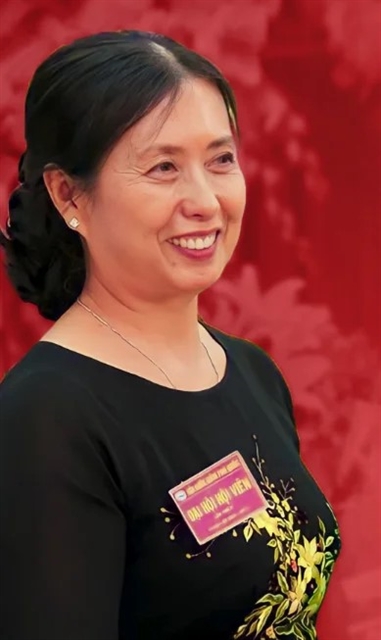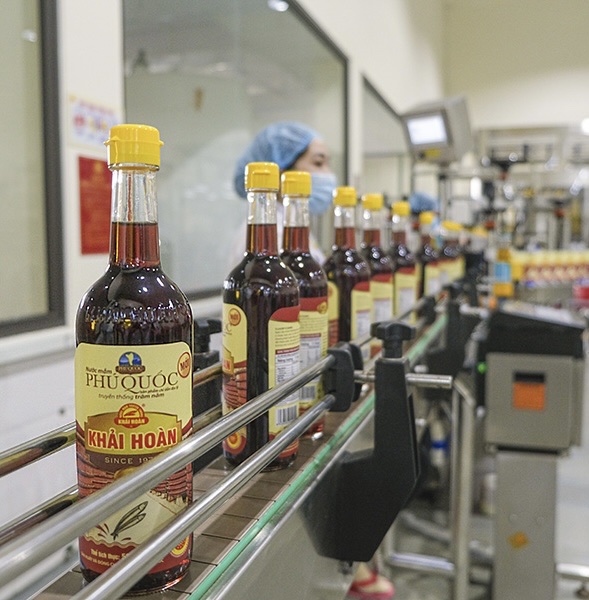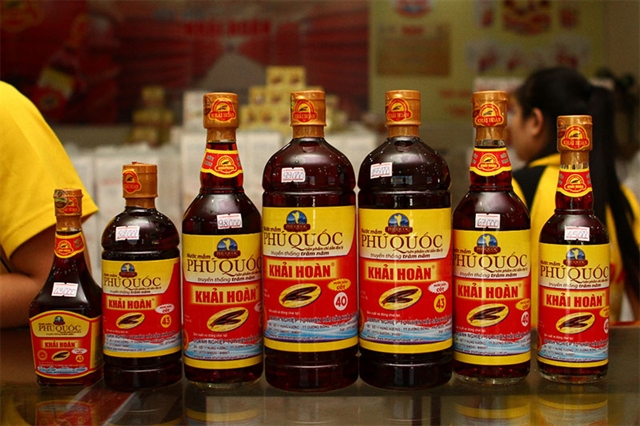Việt Nam News spoke with Hồ Kim Liên, former chairwoman of the Phú Quốc Fish Sauce Association and Chairwoman of Khải Hoàn Trading JSC, about how the traditional craft is evolving for the modern era.

Phú Quốc fish sauce has long been a symbol of Việt Nam’s rich culinary heritage.
Made from fresh anchovies and sea salt, fermented in wooden barrels for over a year, it embodies both craftsmanship and patience.
After receiving the European Union’s Protected Geographical Indication (PGI) status, the sauce has gained global prestige while facing new challenges to maintain its authenticity.
Việt Nam News spoke with Hồ Kim Liên, former chairwoman of the Phú Quốc Fish Sauce Association and Chairwoman of Khải Hoàn Trading JSC, about how the traditional craft is evolving for the modern era.
How did EU recognition change things?
The EU’s PGI status marked a milestone in our history. It placed Phú Quốc fish sauce among the world’s most respected traditional condiments, alongside Italian olive oil and French cheese.
This certification doesn’t only protect our brand from imitation—it affirms our unique identity in the global market.
Since receiving this recognition, domestic consumers have become more aware of what constitutes genuine Phú Quốc fish sauce.
They understand that authenticity comes from natural fermentation in wooden barrels, not industrial additives or artificial colourants.
Abroad, the product is now perceived as a premium condiment rather than a niche Asian ingredient.
We have also seen a positive impact on tourism. Visitors from home and abroad come to see the barrel houses, observe the fermentation process, and experience the aroma and taste firsthand.
This interaction helps tell the story of our heritage and strengthens our brand through cultural appreciation.
What are the biggest challenges today?
Our greatest challenge is unfair competition. Industrial fish sauce can be mass-produced within weeks and sold cheaply, while fake products misuse the name “Phú Quốc” without authorisation.
These counterfeit products confuse consumers and erode trust.
Traditional producers face higher costs because our process is slow and labour-intensive.
We use only anchovies caught in local waters and sea salt from the Central region, fermenting them naturally for 12 to 15 months.
Every barrel requires careful attention and expertise.
While this method ensures superior quality, it limits production volume and makes it harder to compete in a market driven by price rather than authenticity.
However, we believe tradition is our pride and identity. Compromising on quality would mean betraying the generations who built this craft.
What makes Phú Quốc fish sauce unique is not just its flavour—it’s the patience and integrity behind it.

How difficult is it to export to markets like Europe, the US, or Japan?
It’s a long and demanding journey. Each country imposes its own food safety and labelling standards.
For fermented products like fish sauce, these requirements are particularly strict—covering microbial safety, residue levels, packaging, and even traceability.
To meet these requirements, we must invest in modern facilities and technologies.
At Khải Hoàn, we’ve installed stainless steel filtering systems, modern bottling lines, and international-standard testing labs.
We also apply HACCP and other quality control systems to ensure compliance.
Yet, these investments are costly for small producers.
Many family-run workshops cannot afford the required upgrades, and must therefore depend on support from associations or government programmes.
This is why state assistance—both technical and financial—is vital if we want more producers to reach export markets.
Do high traditional costs threaten small producers?
Yes, sustainability is a major concern. The traditional process depends on nature—fresh anchovies, sea salt, the island’s humidity, and the wooden barrels made from local timber.
Any disruption, such as poor fishing seasons or rising material costs, directly affects production.
Small producers often face the temptation to shorten fermentation time or use substitutes to reduce costs. But doing so would mean losing the very soul of the craft.
We at Khải Hoàn choose to stay true to the traditional method, even if it’s more expensive, because that’s what makes our fish sauce distinct and deserving of the EU’s recognition.
We need a balance: innovation that supports efficiency without replacing tradition.
New technologies can help with hygiene, bottling, and traceability while preserving the natural process.
What policies could further support the industry?
The Government has been very supportive, but more targeted and long-term mechanisms are needed.
Phú Quốc fish sauce should be treated as a national heritage product, deserving special policies in raw material conservation, brand protection, and export promotion.
I believe there should be a Centre for Research and Conservation of Anchovies and Phú Quốc Fish Sauce, along with a Heritage Museum dedicated to our craft.
These would serve not only as archives of traditional knowledge but also as educational and tourism hubs.
Moreover, financial incentives, technical training, and easier access to credit would help small producers modernise responsibly—adopting better production and marketing tools without losing traditional values.

How is climate change affecting the industry?
Climate change has become a serious threat. Rising sea temperatures and changing marine ecosystems have sharply reduced anchovy populations—the very foundation of our production.
Without anchovies, we cannot make true Phú Quốc fish sauce.
The decline in anchovy catches has led to higher costs and lower output.
The same goes for salt, as unpredictable weather affects both quality and supply.
Protecting our marine ecosystem, therefore, must become a central part of the industry’s development strategy.
Preserving the environment means preserving the essence of our heritage.
We are encouraging fishermen to follow sustainable practices and advocating for stricter controls on overfishing.
If we lose our natural resources, no amount of modern technology can replace them.
What does the future hold for Phú Quốc fish sauce?
The future lies in balance—between tradition and innovation, between heritage and market demand.
We need to invest in storytelling, branding, and cultural tourism so that each bottle carries not only a product but also a story.
With the collective effort of producers, policymakers, and consumers, Phú Quốc fish sauce can continue to shine as both a national treasure and a symbol of Việt Nam’s culinary excellence.
Each drop of this amber-coloured sauce reflects generations of patience, craftsmanship, and pride.
For us, those values are priceless — just like the taste that has made Phú Quốc fish sauce famous around the world. VNS





